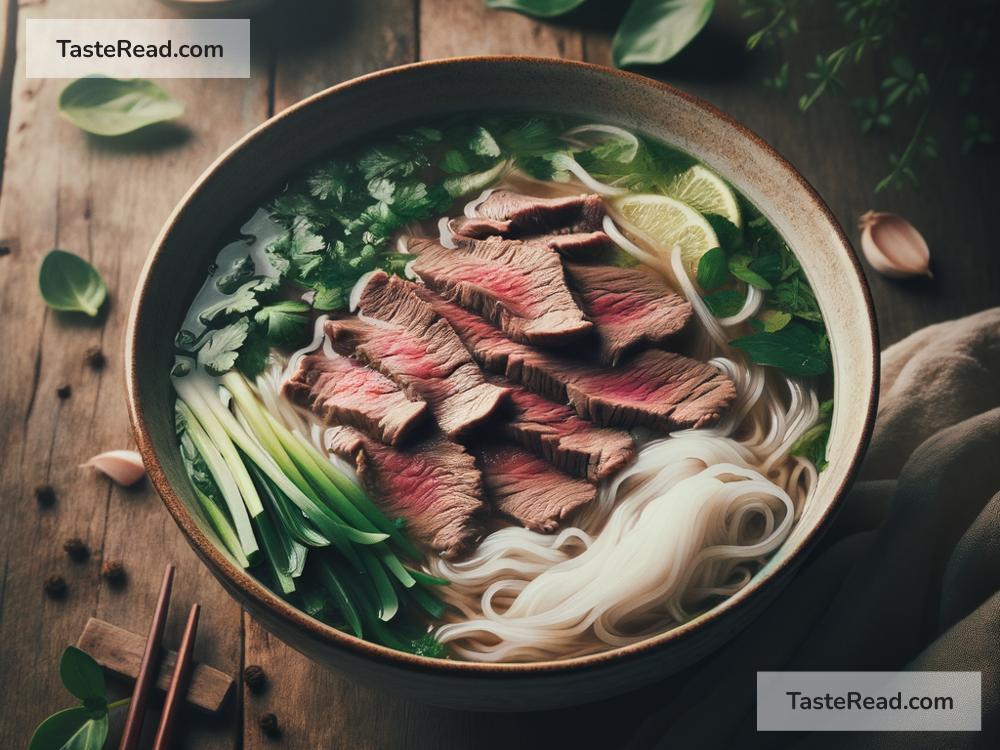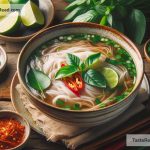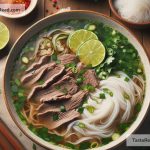Why Vietnamese Pho is a Comfort Food for Every Season
Vietnamese Pho (pronounced “fuh”) is more than just a meal; it’s a bowl full of comfort, warmth, and happiness. This traditional Vietnamese soup, made primarily from broth, rice noodles, herbs, and meat (usually beef or chicken), has captivated the hearts and taste buds of people all over the world. But what is it about Pho that makes it a perfect comfort food for every season? Let’s dive in and find out.
A Bowl Full of History and Tradition
To understand the magic of Pho, we need to journey back to its origins in the early 20th century in Northern Vietnam. Born out of a melting pot of Vietnamese and French culinary traditions during the colonial era, Pho reflects the harmony of simple ingredients coming together to create something greater than their sum. The broth, simmered for hours with spices like cinnamon, star anise, cloves, and cardamom, offers a hug in every spoonful. Its creation is an art, a tradition passed down through generations – a ritual that brings families and communities together.
The Magic of its Simplicity
One of the beauties of Pho is its simplicity and versatility. At its core, Pho is straightforward – broth, noodles, herbs, and meat. Yet, within that simplicity lies a canvas for creativity. You can tailor it to your liking; add more herbs for freshness, spice it up with chili, or squeeze in some lime for a tangy kick. This adaptability makes Pho a delightful dish for any season. Whether it’s a cold winter day or a sunny summer afternoon, a bowl of Pho can be customized to suit the weather and your mood.
A Comfort for Every Climate
In the sweltering heat of the summer, a bowl of Pho with its fresh herbs and lime feels surprisingly refreshing. The herbs, like basil and cilantro, not only add flavor but also have cooling properties that help beat the heat. Despite being a hot soup, Pho feels light and revitalizing, making it an unexpected yet perfect summer meal.
Come winter, Pho transforms into a bowl of warmth and comfort. The steamy broth warms the body and soul, while the blend of spices like star anise and cinnamon fill the air with a comforting aroma. Eating Pho on a chilly day is like wrapping yourself in a warm blanket – it’s soothing, heartwarming, and uplifting.
Health in a Bowl
Besides its undeniable comfort, Pho is also heralded for its health benefits. The broth, rich in spices and herbs, is packed with antioxidants and nutrients that boost the immune system and aid digestion. The choice of lean meats provides protein without weighing the dish down with fats. For many, a bowl of Pho is not just food but a remedy – a natural pick-me-up whether you’re feeling under the weather or simply in need of a nutritional boost.
A Dish for the Soul
But perhaps the most compelling reason Pho is cherished as a comfort food across all seasons is the experience it offers. Eating Pho is an intimate act. It’s about taking a moment to slow down, to savor each spoonful, to taste the complexity of flavors, and to feel the warmth coursing through you. It’s a dish that demands presence, inviting you to engage all your senses – seeing the vibrant colors, smelling the aromatic broth, tasting the harmony of ingredients, and feeling the steam on your face.
Conclusion
Pho embodies the essence of comfort food; it’s nourishing, soulful, and adaptable. Its simplicity allows for creativity, making it a dish that can joyfully be consumed any time of the year. More than just nourishment, Pho is about experience, tradition, and the warmth of human connection. It’s a reminder of the simple pleasures in life and a testament to the power of food to bring comfort, no matter the season. So, the next time you’re seeking comfort in a meal, remember that a bowl of Pho is a bowl of comfort waiting to embrace you, season after season.


